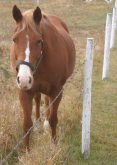DENVER, Colo. — Akaushi cattle have come a long way since Japan exported eight females and three bulls to the United States in 1994.
The Japanese government does not usually allow exports of its native breeds, so this was a coup for those involved.
“It was legal, but it was through a loophole in a trade agreement,” said JoJo Carrales, vice president of cattle operations for Heartbrand Beef.
“Once these came over, they wouldn’t let any more over.”
Heartbrand was set up to manage the cattle in a value chain and market the highly marbled beef to restaurants and retail stores.
Read Also

Beef check-off collection system aligns across the country
A single and aligned check-off collection system based on where producers live makes the system equal said Chad Ross, Saskatchewan Cattle Association chair.
The cattle are smaller than North American beef breeds. They are horned with red coats and have white on the hocks and up the tail end.
The herd has expanded to 3,000 females on a ranch near Harwood, Texas, southeast of Austin. The herd grew through artificial in-semination and embryo transfer to control inbreeding because there were so few in the foundation herd.
“Our inbreeding co-efficient is pretty low,” Carrales said.
“With natural service only, there would be a problem. We keep track of that.”
The Akaushi breed was approved by the National Pedigree Livestock Council as an official purebred breed.
Cattle are typically crossed with Angus to maintain marbling and produce bigger calves with hybrid vigour. They are mainly fed at Bovina Feeders in Texas, where 10,000 have been placed. However, feedlots in Minnesota, Nebraska, Kansas and South Dakota also have placements through producer agreements.
About 180 head are processed weekly at Caviness Packers in Hereford, Texas.
The beef is labelled and sold through wholesalers for the restaurant trade.
All beef receives U.S. Department of Agriculture grades, and one-third grade USDA Prime. Only two percent have graded Select.
Producers in the program receive carcass results, which allows them to make adjustments to eliminate those that do not grade well.
The company works to share the added premiums throughout the value chain as an incentive to follow the program.
Participating producers can still sell the feeder cattle through the conventional stream rather than through Heartbrand.
“If we can show the incentive of a finished Akaushi is worth more than $300 over market, that means a feeder calf could be worth $120 over market and then a bull could be worth more,” he said.
“It is somewhat vertically integrated, but it is the only way you can source from a particular phenotype. When we sell beef every day, we guarantee everything is out of a full-blood bull at least, and that they are fed without an implant. In the feedlot, we don’t feed antibiotics.”
Carrales said the company would like to bring the cattle and marketing concept to Canada.
The breed was developed in Japan about 100 years ago. The Japanese Association of Akaushi maintains carcass performance, breeding pedigrees and economic results for each animal.
The data is used to select prospective sire and dam lines for further genetic improvement.


















